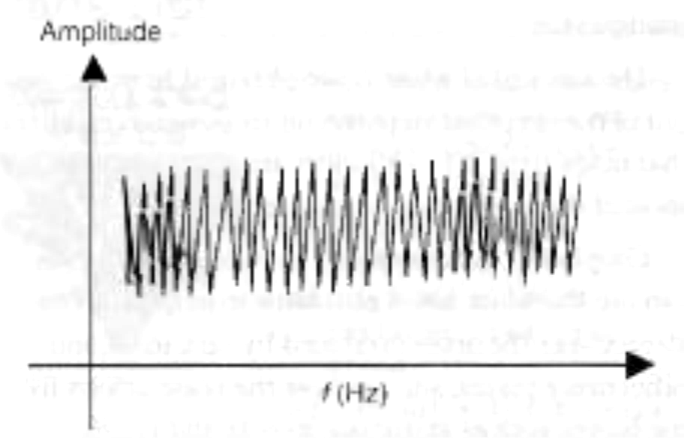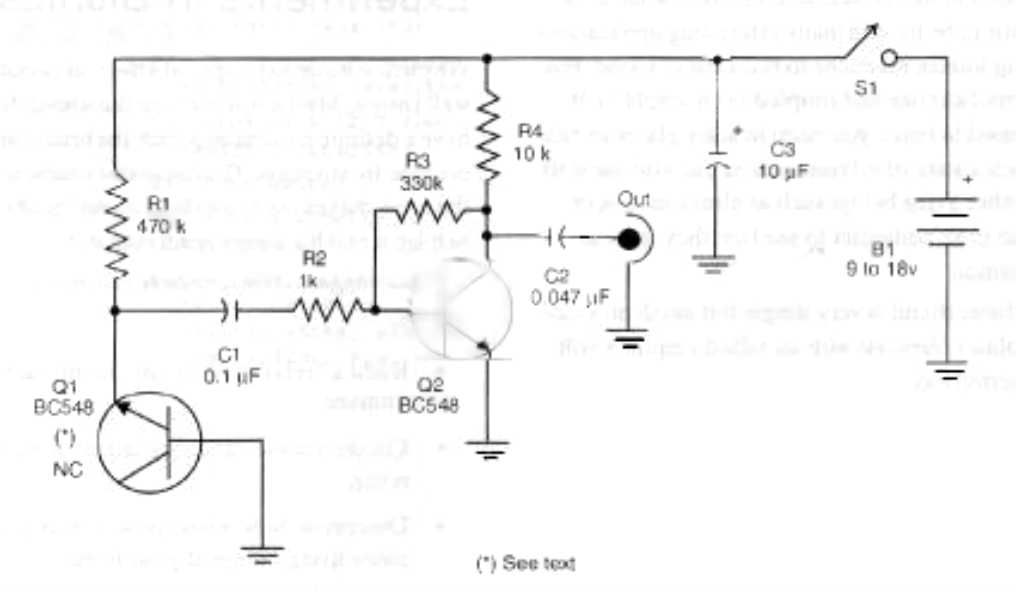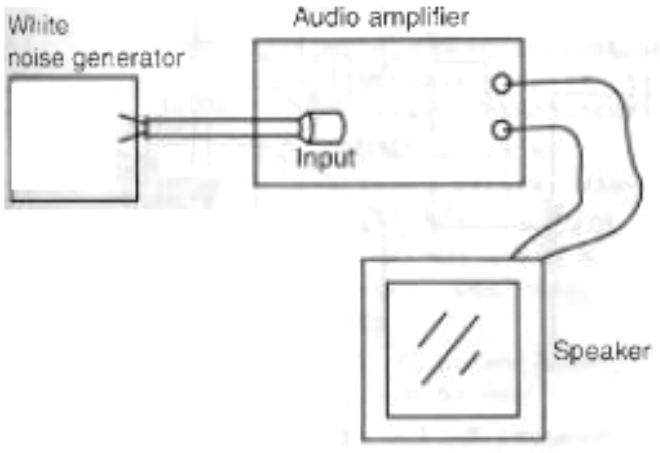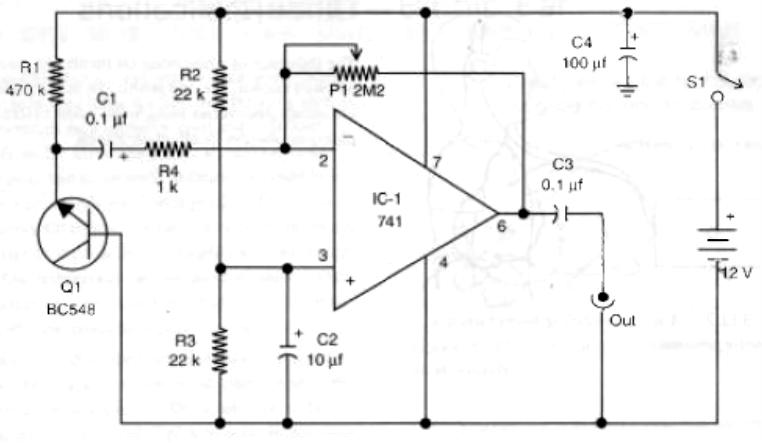What is important to the bionics evil genius is that white noise affects people and animals in specific ways, with the main effect on people being one of relaxation and sleep. That is why natural sources of white noise such as the sea, wind, or rain have a particular influence on humans, causing many to drop off to sleep or reach a state of relaxation.
The main sources of natural background noise are the molecular level agitation of matter via temperature changes and natural electric discharges in the atmosphere. When we put a shell over our ear to hear the "sea" noise, we are adding an acoustic amplifier to our natural hearing organs. The shell increases the white noise level produced by the thermal agitation of the air molecules to a level above the audible threshold. This is an audible white noise.
The idea in this project is to mount a white noise generator to be used in many interesting applications involving human reactions to this kind of sound. Powered from batteries and coupled to an amplifier, it can be used to make you sleep in noisy places or help you reach a state of relaxation. You can also use it to excite other living beings such as plants, insects, or even fish in an aquarium to see how they react to these sounds.
The basic circuit is very simple but needs an external amplifier. Versions with an added amplifier will be suggested too.
The Project
Electronics components such as resistors, diodes, transistors, and so on it can be used to produce white noise, covering a large band of frequencies. In our projects, we will use silicon transistors because they are cheap and easy-to-find devices.
The basis of our project is a transistor used as a white noise source coupled to a preamplifier. The signals coming from the output of the preamplifier are coupled to an external audio amplifier driving a loudspeaker.
The amount of white noise obtained from the out-put of the amplifier depends on its power. Amplifiers that range from 0.5 to 50 watts are recommended for most of the applications suggested here.
Coupled to the amplifier, the bionics evil genius can use the white noise generator to help someone sleep; cover the noise produced by cars, tools, and other noisy places; and see how the noise affects living beings such as mammals, insects, and plants.
Experiments in Bionics
Why white noise has a special effect on people is not well known. Maybe it is because the sound does not have a definite pattern on which the brain can concentrate its attention. The dispersive characteristic of the noise makes the brain think about "nothing," helping it reach a sleepy or relaxed state.
Some suggested experiments and projects are as fol]ows:
• Build a "relaxation circuit" to interact with humans.
• Create a noise-canceling circuit using white noise.
• Determine how white noise affects plants and other living beings at your home.
The Electronic Circuit
The circuit amplifies the thermal noise in a semiconductor junction (emitter base junction in a transistor) and it can be applied to the input of any audio amplifier. A loudspeaker reproduces the signal at the output of the amplifier, which is formed by a negative positive negative (NPN) general-purpose transistor with a gain determined by R1.
The circuit needs a voltage of up to 9 volts to pro-duce noise at a level high enough to drive the amplifier, so the power supply must be a 9-volt battery or a 12-volt source. Because current drain is very low, a 9-volt battery will have an extended life in this application, providing energy for many weeks.
Any general-purpose NPN transistor can be used as a white noise source, and types such as the BC548, 2N2222, and BC547 can be used. Figure 1 shows the representation of white noise.
An important point to consider is that the circuit is sensitive to external noises, such as the sound produced by the AC power line. To avoid this noise, the circuit must be connected to the input of the amplifier using a shielded cable. It is not recommended that you use an external power supply connected to the AC power line because it can introduce noise in the circuit.
How to Build
The complete schematic diagram of the basic version of a simple white noise generator is shown in Figure 2.
Testing and Using
Plug the output of the circuit to the input of any audio amplifier, as shown in Figure 3. Then turn on the power supply and adjust the volume control of the power amplifier to get a sound like the one produced by the sea or wind. When using the circuit for relaxation purposes, adjust the volume to a comfortable level. When using it to cover ambient noise, adjust the volume to the level necessary.
Parts List
Required Parts:
Q1, Q2: BC548 general-purpose NPN silicon transistors
R1: 470 kΩ x 1/8 W resistor, yellow, violet, yellow
R2: 1 kΩ x 1/8 W resistor, brown, black, red
R3: 330 kΩ x 1/8 W resistor, orange, orange, yellow
R4: 10Ω x 1/8 W resistor, brown, black, orange
C1: 0.1 µF ceramic or polyester capacitor
C2: 0.047 µF ceramic or polyester capacitor
C3: 10 µF x 16 V electrolytic capacitor
S1: On/off switch
B1: 9 to 18 V battery
Other: PCB, battery connector, shielded cable, wires, solder, etc.
Additional Circuits and ideas
Many experiments that involve humans interacting with electronic circuits can be made using a white noise generator. Some suggestions for a few exercises are given in this section.
Stochastic Resonance
Stochastic resonance occurs when a modulated signal that is too weak to be heard or otherwise detected under normal conditions becomes detectable. This is due to a resonance phenomenon that is produced between the weak deterministic signal and a signal with no definite frequency called stochastic noise. A signal with no definite frequency is called noise and can be produced by random phenomena such as thermal movement of atoms in a material, or wind, or rain.
This phenomenon explains why some people can hear "voices" in the noise produced by the wind or grass excited by the wind. The Native Americans say that they can hear the voices of their ancestors in the noise of the grass, as explained in the movie The Grass Harp.
You can make experiments trying to record the voices of the past or other dimensions using a white noise generator as a source of stochastic noise.
Adding an Amplifier
Figure 4 shows how to use the LM386 audio amplifier, described in the electric fish experiment, with the white noise generator. Make sure that the white noise generator is powered from a 9- to 12-volt source and the LM386 is powered from another supply producing 6 volts.
Figure 4 - Using the LM3786 to amplify the white noise.
White Noise Generator Using an Operational Amplifier 741
Another source for white noise is the circuit shown in Figure 5. The advantage of this circuit is that the amplitude of the white noise can he controlled by 131, which sets the gain of the amplifier.
This is important for getting the necessary amount of signal to excite the input of the external amplifier. Another advantage is that the circuit has low-impedance output. This means that it is less sensitive to noise, especially the noise produced by the AC power line.
The circuit is powered from a 9- or 12-volt power supply and the current drain is also very low, extending the battery life.
Any NPN general purpose can he used as a noise source, and the operational amplifier 741 can be replaced by equivalents.
Parts List
Required Parts
IC-1: 741 integrated circuit operational amplifier
Q1: BC548 or equivalent, any general-purpose NPN silicon transistor
R1: 470 kΩ x 1/8 w resistor, yellow, violet, yellow
R2, R3 : 22 kΩ x 1/8 W resistor, red, red, orange
P1: 2.2 MΩ potentiometer, lin or log
C1, C3: 0.1 µF ceramic or polyester capacitor
C2: 10 AF x 16 V electrolytic capacitor
C4: 100 µF x 16 V electrolytic capacitor
S1: On/off switch
B1: 9 to 18 V battery
Other:
PCB, shielded cable, wires, solder, etc.
Mounting a Noise-Canceling Helmet
If you live in a noisy place, you can install earphones in a helmet and plug them into the output of the amplifier, as shown in Figure 6.
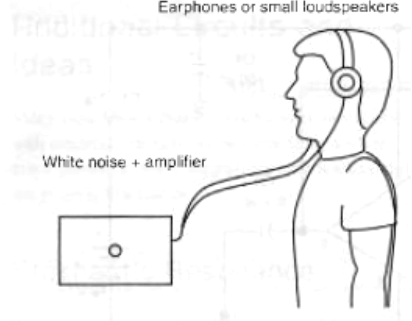
Other Applications
The influence of white noise on plants and animals is not well known. The evil genius can make some important discoveries using white noise to stimulate plants or observe its effect on insects.

